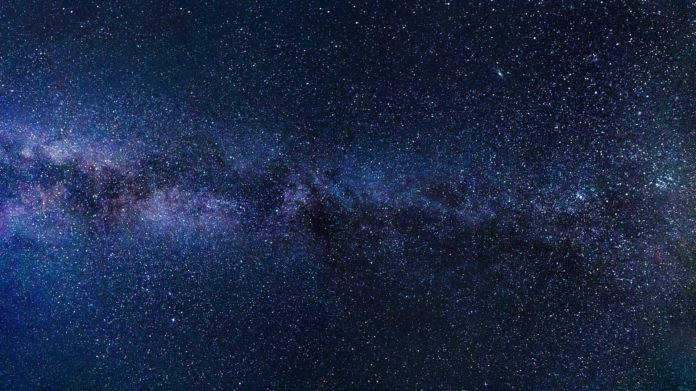Astronomers believe that the first generation of stars lived fast and died young, burning quickly through their fuel before dying explosive deaths and enriching the Universe. Yet due to their short lifespans and the fact that we don’t know what they looked like, these stars are notoriously tricky to observe.
Because light takes time to travel through space, however, we may be able to spot the first generation of stars by looking very far away. The recently launched James Webb Space Telescope will allow astronomers to peer back in time to these first stars — and now, with the help of a powerful computer simulation, astronomers finally have an idea of what to look for.
The research was led by Tyrone Woods, a Plaskett Fellow at the National Research Council of Canada’s Herzberg Astronomy and Astrophysics Research Centre, and published in The Astrophysical Journal Letters.
The elusive first generation of stars
While the stars we see in the night sky are primarily composed of hydrogen and helium gas, most of them also contain a small fraction of heavier metals. Many of these metals were initially produced in the cores of long-dead stars, which exploded into supernovae at the end of their lives and seeded the nearby Universe with materials for future generations.
In contrast, astronomers believe that the very first stars in the Universe were only composed of hydrogen and helium. Since heavier metals are formed throughout the lives and deaths of stars, these materials weren’t available in the early Universe.
Yet while this makes sense in theory, astronomers have been unable to find metal-free stars throughout the Universe. Because hot, massive stars lead the shortest lives, astronomers now believe that the first stars must have been hot and massive as well — and while they may have existed in the distant past, they all would have died out in the early Universe.
Searching for the first stars
When we observe distant reaches of the Universe, we’re actually observing light that was emitted many years ago — far enough back in time that the first stars would still be alive.
This is one of the key goals of the recently launched James Webb Space Telescope, which will be able to peer into the distant past. Yet since astronomers have never seen metal-free stars, they’re still not sure what to look for — and this is where Woods and colleagues have found a way to help.
The team used one of the most powerful supercomputer in the world — a system known as Blue Waters — to simulate the very early Universe in a project known as the Renaissance Simulation. They allowed the simulation to evolve over time, eventually getting to the point where stars began to form.
To their surprise, the stars in their simulation didn’t match up with what astronomers had expected. The hottest stars are typically blue in colour, but the first stars in the simulation were red — a colour typically associated with the coolest stars in the Universe.
While this may seem strange, the scientists believe that these unexpected results were caused by the speeds at which these stars were forming. Because the early Universe was so compact, these first stars formed in incredibly dense clouds of gas — and the speeds at which they accumulated all this material fundamentally altered their appearances.
“As gas piles onto these forming stars, it brings in heat along with it,” explained Woods in a press release.
“What we found is that many of these first stars are growing much, much faster than that heat can radiate away, so [the stars] puff up, becoming very red and bloated.”
Clues for the James Webb Space Telescope
Going forward, these results will help scientists search for the first stars with the James Webb Space Telescope. While astronomers may have been on the lookout for hot, blue stars previously, they know now that the first stars may well have been red.
“The James Webb Space Telescope will look at several patches of sky for days at a time, to detect and identify the most distant stars and galaxies,” said Chris Willott, a co-author on the study and a Canadian Webb Project Scientist.
“These new predictions will guide [astronomers] to be on the lookout for first stars that may be very red and not just blue, as previously expected.”








































